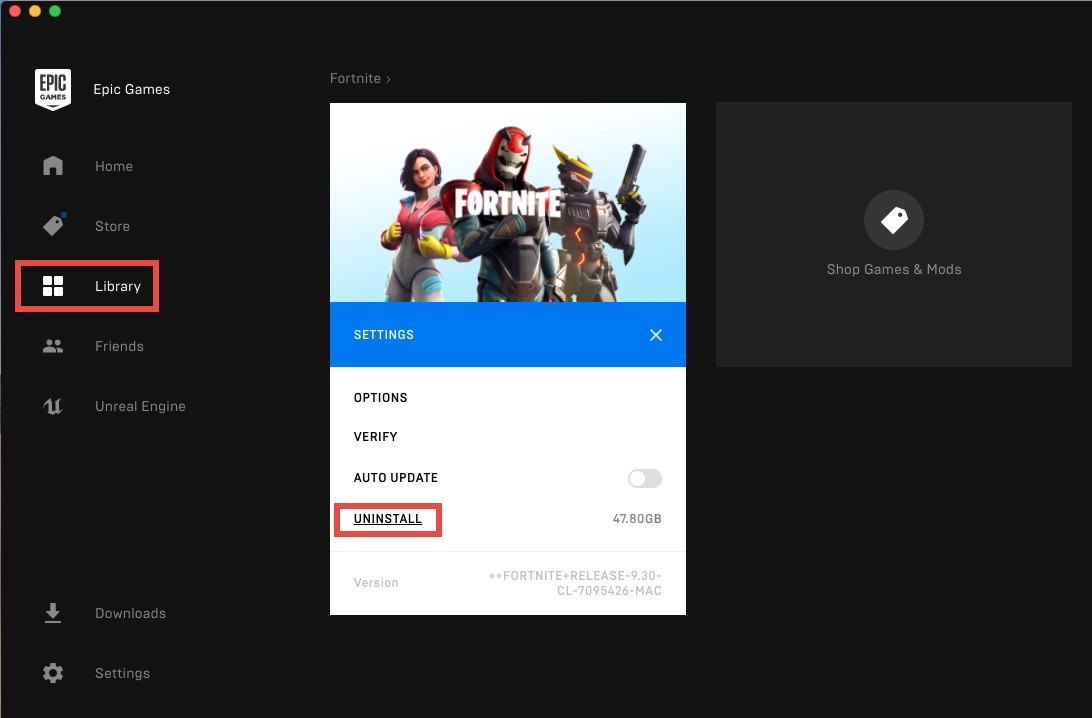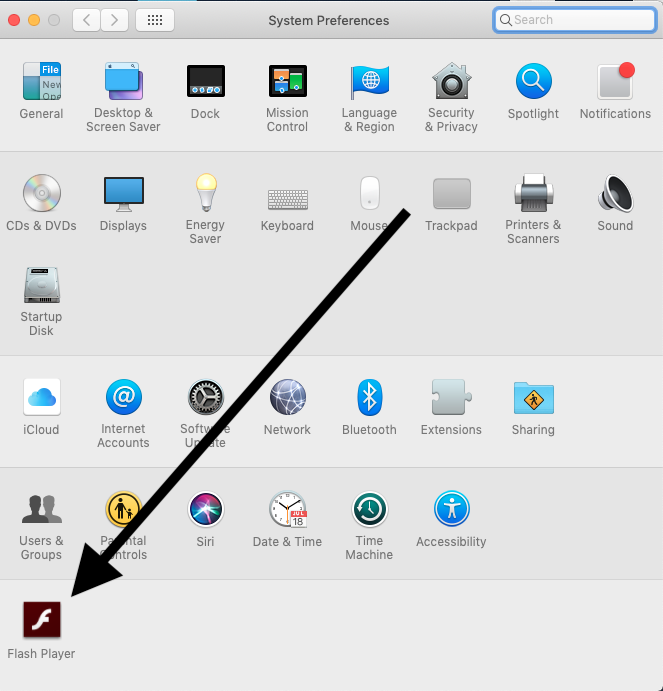-->
Apr 16, 2018 To resolve this problem, use one of the following methods, depending on your version of Office for Mac. Excel 2016 for Mac Step 1: Quit all programs and close all windows. On the Apple menu, click Force Quit. Select an application in the 'Force Quit Applications' window. Note You cannot quit Finder. Click Force Quit.
Note
Office 365 ProPlus is being renamed to Microsoft 365 Apps for enterprise. For more information about this change, read this blog post.
Symptoms
When you save a Word for Mac document, the application crashes or quits unexpectedly.
Autoupdate App Wont Quit From Doc Macbook Pro
Resolution
Step 1: Download and install all Office updates
To obtain updates with Office for Mac applications, follow these steps:
Microsoft AutoUpdate for Mac, which comes with Office, can keep your Microsoft software up to date. When AutoUpdate is set to check for updates automatically on a daily, weekly, or monthly basis, there's no need to search for critical updates and information; AutoUpdate delivers them directly to your computer. To do this:

- Start any Office for Mac application on your computer.
- Click Help menu, click Check for Updates.
For additional information about Office for Mac updates, seeWhere and how to obtain Office for Mac software updates.
If the issue continues to occur, proceed to the next step.
Step 2: Check the hard disc name
Make sure that your hard disc has a name. The name cannot be all numbers but can contain numbers. The name must start with a letter. It must not contain any special characters, such as periods, commas, semi-colons, quotation marks, and so on.
Step 3: Save to a different location
If you are saving a file in your Documents folder, instead try saving the file to the desktop or to a different location.
Remember that there is a 255-character limit to the file name, and the path of the saved file is included in the name. For example, a file that is saved to the desktop has the path 'HDusersyour user nameDesktop.' These characters are counted toward the 255-character limit.
If you want to save to a network share or to an external device (such as a flash drive), first save the file to your local hard disc. If you can save the file to the hard disc (your Documents folder), there is nothing wrong with the Excel installation or with the file. If you cannot save to your local hard disc, go to step 3.
If you cannot save the file to an external device, contact Apple or the manufacturer of the external device. If you cannot save to a network share, contact the network administrator (your IT department) or the owner of the share. If you do not have an IT department and you want to save to a network, contact Microsoft Professional Support.
Step 4: Empty the AutoRecovery folder
Important
The location of certain files are different if you have Service Pack 2 (SP2) installed. To check if it is installed, open Word, and then click About Word from the Word menu. If the version number is 14.2.0 or above, you have Service Pack 2 and you should follow the Service Pack 2 steps when provided in this article.
If there are too many items in the AutoRecovery folder (userDocumentsMicrosoft User DataOffice 2008 AutoRecovery or Office 2010 AutoRecovery), this can cause memory problems and save problems because these files are loaded into memory when Word is started.
Move AutoRecovery files to the desktop or to another folder to see whether they are causing the problem. To do this, follow these steps:
To empty the AutoRecovery folder, follow these steps if have version 14.2.0 (also known as Service Pack 2) installed:
Quit all applications.
On the File menu, click New Folder.
A new folder is created on the desktop. The folder will be called 'New Folder.'
On the Go menu, click Home.
Open Library.
Note
The Library folder is hidden in Mac OS X Lion. To display this folder, hold down the OPTION key while you click the Go menu.
Open Application Support, and then open Microsoft.
Open Office 2011 AutoRecovery.
On the Edit menu, click Select All.
Drag all files into 'New Folder' on the desktop.
The AutoRecovery folder should be empty.
Open Excel for Mac 2011 and try to save a file.
If you can save a file, review the contents of 'New Folder' to decide which files that you want to keep.
If the problem continues to occur, go to the next method.
To empty the AutoRecovery folder, follow these steps if you do not have Service Pack 2 installed:
Quit all applications.
On the File menu, click New Folder.
A new folder is created on the desktop. The folder will be called 'New Folder.'
On the Go menu, click Documents.
Open Microsoft User Data, and then open Office 2011 AutoRecovery.
On the Edit menu, click Select All.
Drag all files into 'New Folder' on the desktop.
The AutoRecovery folder should be empty.
Open Excel for Mac 2011 and try to save a file.
If you can save a file, review the contents of 'New Folder' to decide which files that you want to keep.
If the problem continues to occur, go to the next method.
Autoupdate App Wont Quit From Doc Mac Free
Step 5: Remove Word preferences
Note
Removing the preferences will remove any customizations that you made. These customizations include changes to toolbars and custom dictionaries and keyboard shortcuts that you created.
Quit all Microsoft Office for Mac applications.
On the Go menu, click Home.
Open Library.
Note
The Library folder is hidden in Mac OS X Lion. To display this folder, hold down the OPTION key while you click the Go menu.
Open Preferences.
Look for a file that is named com.microsoft.Word.plist.
If you locate the file, move it to the desktop. If you cannot locate the file, the application is using the default preferences.
If you locate the file and move it to the desktop, start Word, and check whether the problem still occurs. If the problem still occurs, quit Word, and then restore the file to its original location. Then, go to the next step. If the problem seems to be resolved, you can move the com.microsoft.Word.plist file to the trash.
Quit all Office for Mac applications.
On the Go menu, click Home.
Open Library.
Note
The Library folder is hidden in Mac OS X Lion. To display this folder, hold down the OPTION key while you click the Go menu.
Open Preferences, and then open Microsoft.
Locate the file that is named com.microsoft.Word.prefs.plist.
Move the file to the desktop.
Start Word, and then check whether the problem still occurs. If the problem still occurs, quit Word, and restore the file to its original location. Then, go to the next step. If the problem seems to be resolved, you can move the com.microsoft.Word.prefs.plist file to the trash.
On the Go menu, click Home.
Open Library.
Note
The Library folder is hidden in Mac OS X Lion. To display this folder, hold down the OPTION key while you click the Go menu.
Open Application Support, and then open Microsoft.
Open Office, and then open User Templates.
Locate the file that is named Normal, and then move the file to the desktop.
Start Word, and then check whether the problem still occurs. If the problem seems to be resolved, you can move the Normal file to the Trash. If the issue continues to occur, go to the next step.
Step 6: Create a new user account
Sometimes, user-specific information can become corrupted. This can interfere with installing or using the application. To determine whether this is the case, you can log on as a different user or create a new user account, and then test the application.
If the issue occurs even when you use the alternative account, go to the next step.
Step 7: Test saving the file in safe mode
Try to save when the computer is operating in safe mode. If you can save while in safe mode, the problem probably concerns software that is running in the background.
For information about how to enter safe mode in Mac OS, seeClean startup to see if background programs are interfering with Office for Mac.
More information
If the steps in this article did not resolve the issue, visit the Mac forums for possible resolutions/workarounds.
Microsoft AutoUpdate is a software program that allows you to keep your Microsoft software applications up-to-date automatically on your Mac.Microsoft AutoUpdate is a 3rd party software that keeps track of your Microsoft software programs on your Mac. Sometimes the Microsoft AutoUpdate application can be a target of a malware attack.Trojan Horse infections like the Microsoft AutoUpdate Virus can be devastating for the infected computer system and can lead to many problems for the attacked user. Those advance and very widespread malicious pieces of software are used by their creators to achieve various goals related to some form of cyber crime. Typically, a Trojan would get used to steal information from your computer and online accounts or to exploit the resources of your system for the hacker’s benefit. For instance, if the virus gets hold of some important and sensitive details about you or manages to steal some private digital data from your computer, the hacker responsible for this may later use this in all kinds of harmful ways. They may blackmail you and harass you, threatening that if you do not give in to their demands, they’d publicly release your private information. In other cases, the criminals may directly use the obtained info without you even realizing it. For instance, if the hackers have gotten their hands on your credit or debit card numbers (many Trojans could make this possible), they may directly drain your banking accounts and disappear before you even realize what is happening. All kinds of abuse of personal details and information is possible if a Trojan has managed to enter your computer and initiate its malicious processes in the system. Another possibility is when an infection of this type is used to control the processes in your computer so that your machine’s resources may be used for tasks initiated by the hackers. One common example of that is when your system’s CPU, RAM and GPU are all used to mine BitCoin or some other similar virtual currency. In those cases, it is safe to assume that the Trojan has already established a whole botnet of infected computers that are working together, coordinated by the Trojan, to achieve whatever goal the hackers have set. Aside from cryptocurrency mining, other things that the infected botnet computers could be used for is mass spam e-mail campaigns, DDoS attacks, social media spam, rigging online polls and more.Microsoft AutoUpdateAs you can probably already tell, the functionality of the Trojan Horse infections tends to be quite varied. Those aren’t threats like Ransomware (Gusau, Madek) or Rootkits that have some specific use and cannot really do anything else. The Trojan infections are usually capable of carrying out different malicious tasks and this is one of the things that makes them so problematic. Microsoft AutoUpdate is a new Trojan Horse virus that many users have reported in recent days. The information about it is still somewhat insufficient to tell you what the underlying goal of this infection is. However, we may still be able to help you remove the Microsoft AutoUpdate Virus from your machine if it is currently there. Take a look at the Microsoft AutoUpdate-removal guide we’ve prepared and included in this article and try to complete its steps. If you face any issues with the guide, you can try the removal tool linked in it and/or ask for our help within the comments section. SUMMARY: NameMicrosoft AutoUpdateTypeTrojanDanger LevelHigh (Trojans are often used as a backdoor for Ransomware)SymptomsTrojans may cause your computer to behave in all sorts of unexpected ways – from BSOD crashes to software failure, unauthorized file replacements and software modifications as well as many more.Distribution MethodShady sites with questionable contents and a lot of flashy ads as well as massive spam e-mail campaigns are commonly used tools of Trojan Horse distribution.Quick solution to remove parasiteCombo Cleaner is a tool to detect malware on your computer. You have to activate trial or purchase the full version to remove infections.
NameMicrosoft AutoUpdateTypeTrojanDanger LevelHigh (Trojans are often used as a backdoor for Ransomware)SymptomsTrojans may cause your computer to behave in all sorts of unexpected ways – from BSOD crashes to software failure, unauthorized file replacements and software modifications as well as many more.Distribution MethodShady sites with questionable contents and a lot of flashy ads as well as massive spam e-mail campaigns are commonly used tools of Trojan Horse distribution.Quick solution to remove parasiteCombo Cleaner is a tool to detect malware on your computer. You have to activate trial or purchase the full version to remove infections.